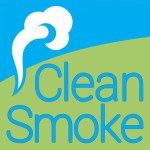Summary
Because of more modern climate smoke houses and changes to the law, traditional smoking methods had to be optimized. For one, smoke should be produced in a standardized composition. In addition, the method of producing freshly developed smoke had to be improved with regards to environment protection, and the smoke composition. By now, the generation of pre-purified primary smoke condensate is a highly developed process, where initially, conventional smoke is
generated in a controlled environment by using standardized sawdust. Most of the chemical compounds present in this smoke, such as phenol or heterocyclic hydrocarbons, are desired components because of their – for meat products beneficial – characteristics such as taste, color, texture and preservation. The purified primary smoke condensates only differ from freshly generated smoke in that they remove the tar phase, which poses a potential health risk. The watery phase is nearly completely free from genetically changing and carcinogenic elements, whereas in the tar phase, various polycyclic aromatic hydrocarbons (PAH) are present, with some of them viewed as carcinogenic. A disadvantage of traditional smoking methods is that they require the cleaning of smokehouses with smoke resin removers, having therefore a negative impact on the sewage system. In addition, depending on the smoke-producing process in question, varying levels of exhaust emissions develop, requiring a cleaning or reburning in accordance with
the Federal Immission Control Act. Smokehouses operated with primary smoke condensate are not subject to these requirements.
Introduction
1. Purpose of Smoking
2. Smoke
2.1 Smoke Material
2.2 Smoke Development
Smoke is being generated by incomplete burning in two stages. First pyrolisis (dry distillation), and secondary reactions under release of oxygen with oxidation, polymerization and condensation.
2.3 Composition
Smoke can be divided into two ingredients: gaseous materials like phenol, organic acid and carbonyl, and non-volatile, particulate materials such as tar, resin, ash and soot. About 48 per cent are made up of unwanted materials such as ash and tar.
2.4 Development of Smokehouses
2.5 Cleaning Flue Gas
Reburning
• Thermal
• Catalytic
• Additive to incinerators
Condensation
• Indirectly in coolers
• Directly in smoke washers
• Directly in closed recirculation systems
Absorption
• In smoke washers with absorption systems, containing oxidizing agents such as ozone,
chlorine dioxide, sodium peroxide or lye, such as soda lye
Adsorption
• To sorbents (solid materials with large inner surface, i.e. activated carbon
Combination methods
• Electrostatic deposit of particle phase
• Absorption or adsorption of gaseous phase
Biofilter
Additional costs for money and effort for the disposal of incurring materials must be considered.
3. Primary Smoke Condensate
3.1 Production
The benefit of generating smoke for primary smoke condensates lies in the centralized production. It simplifies the cleaning process and reduces the amount of emissions, therefore helping to protect the environment. To further protect the consumers’ health, undesired elements such as tar, resin, ash and soot can be removed from the condensate.

3.2 Application
When applying the primary smoke condensate, it needs to be distinguished between smoke flavor and smoke. Smoke aromas are added to the foods in liquid form, used to impregnate the inside of sausage casings, sprayed on foods, or the foods are dunked in aroma. Another process is to turn the primary smoke condensate back into smoke by using pressurized air. If this smoke is generated externally and passed in from outside the smokehouse, there is a smaller margin of error in the smoking process.
The transmission depends on:
- Smoke concentration
- Interface between recirculating air and product surface
- Temperature of recirculating air
- Relative humidity of recirculating air
- Casing properties
- Filling level
- Diffusion properties of food
- Duration of treatment

3.3 Smoke Components
4. Conclusion
Smoking with primary smoke condensate offers numerous advantages compared to conventional smoking methods.
Process quality
- Standardized primary smoke condensate
- Diverse product varieties
- No approval process according to Federal Immission Control Act required
- Closed circuit, emission-free smoking
- No costs for cleaning of flue gas and disposal (tar, ash)
- Lower cleaning and sewage costs
Product quality and safety
- Lower PAK levels in finished product
- Smoke colour and taste adjustable to product characteristics
- Inhibiting microbial effect (bacteria, yeast, mould)
- Inhibiting antiviral effect
- Antioxidant effect
Declaration
- On ingredients list: smoke
